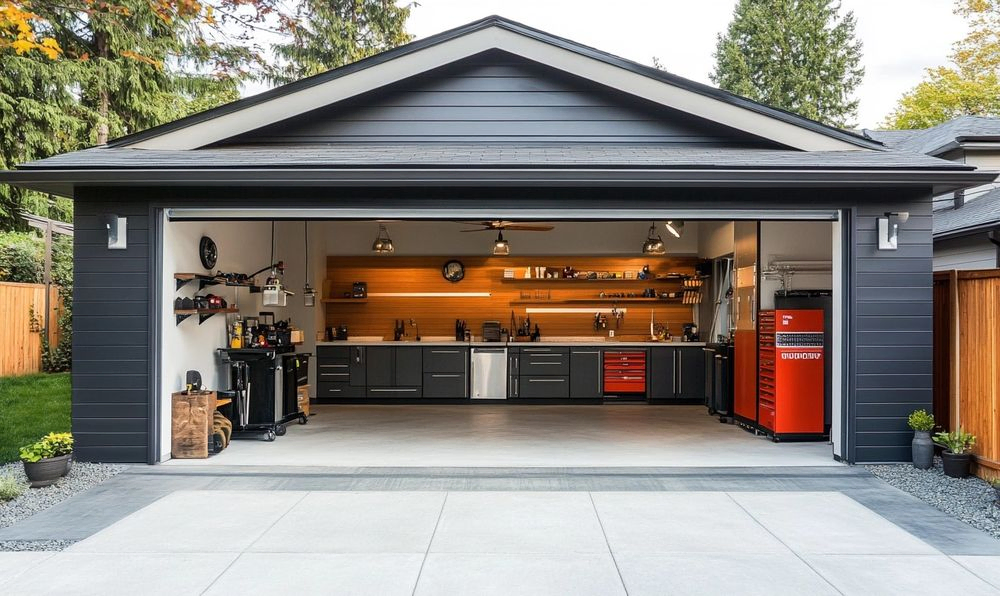
Welcome, fellow workshop enthusiasts! Today, we delve into the crucial topic of installing and maintaining workshop ventilation systems. As a seasoned expert in the field of garage workshop safety and equipment, I am excited to share with you the essential knowledge and tips to ensure optimal air quality and safety in your workspace.
Proper ventilation in a workshop is not just a matter of comfort—it is a vital component of a safe and productive working environment. By effectively managing airborne pollutants, fumes, and dust, you can protect your health and well-being while enhancing the overall efficiency of your projects.
When it comes to workshop ventilation systems, proper installation is key. From exhaust fans to ductwork design, every element plays a crucial role in maintaining air circulation and reducing the risk of respiratory issues. Additionally, regular maintenance is essential to ensure that your ventilation system operates efficiently and effectively.
Join me on this insightful journey as we explore the ins and outs of workshop ventilation installation and maintenance. Let’s empower ourselves with the knowledge and tools needed to create a safe, healthy, and productive workshop environment for all our DIY endeavors.
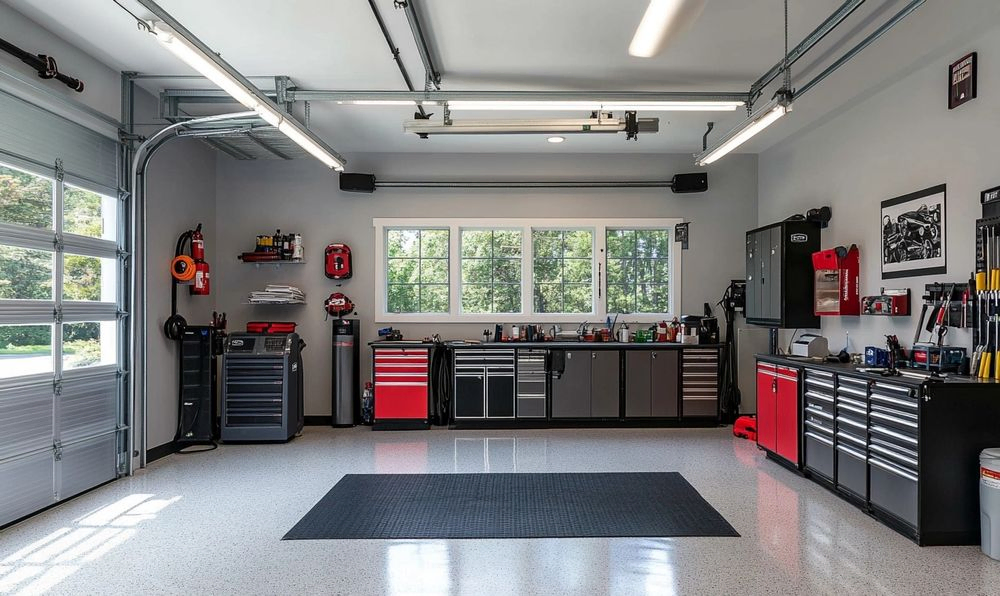
Understanding the Importance of Workshop Ventilation Systems
When you step into your garage workshop, you’re surrounded by the buzz of creativity and the smell of sawdust, creating a sanctuary for your projects. Adequate ventilation is crucial to ensure this space remains safe and comfortable for you.
Why is Ventilation Essential?
Without proper ventilation systems, your workshop can become a breeding ground for various hazards:
- Fumes from chemicals
- Dust and debris
- Heat build-up
The Benefits of Fresher Air
Imagine working in a stuffy room versus one with a gentle breeze flowing through. Ventilation not only keeps the air fresh but also:
- Reduces the risk of respiratory issues
- Prevents overheating during intense projects
- Eliminates potentially dangerous fumes
Invest in Your Well-being
Proper garage workshop ventilation is an investment in your health and safety. It ensures you can continue pursuing your passion without jeopardizing your well-being. So, isn’t it time you prioritize this essential aspect of your workshop?

Types of Ventilation Systems Suitable for Garage Workshops
When setting up a workshop in your garage, proper ventilation is crucial for your safety and well-being. Here are some common types of ventilation systems suitable for garage workshops:
Exhaust Fans
Installing exhaust fans is a simple and effective way to remove fumes and improve air circulation in your garage workshop. They help expel contaminants outside, keeping the air inside clean and fresh.
Air Filtration Systems
Air filtration systems work by filtering out dust, particles, and other pollutants from the air in your workshop. These systems are great for maintaining a healthy and clean working environment.
Ventilation Ducts
Proper ventilation ducts can help direct stale air and fumes outside, preventing them from lingering in your workshop. By ensuring proper airflow, ventilation ducts promote a safer and more comfortable workspace.
Natural Ventilation
Utilizing windows, doors, and vents for natural ventilation is a cost-effective way to improve air quality in your garage workshop. Opening windows and doors can help create a cross breeze, allowing fresh air to enter and push out stale air.
Each of these ventilation systems has its advantages, but the best option for your garage workshop will depend on factors like the size of your workspace and the type of activities you perform. Remember, adequate ventilation is essential for maintaining a healthy and safe working environment.
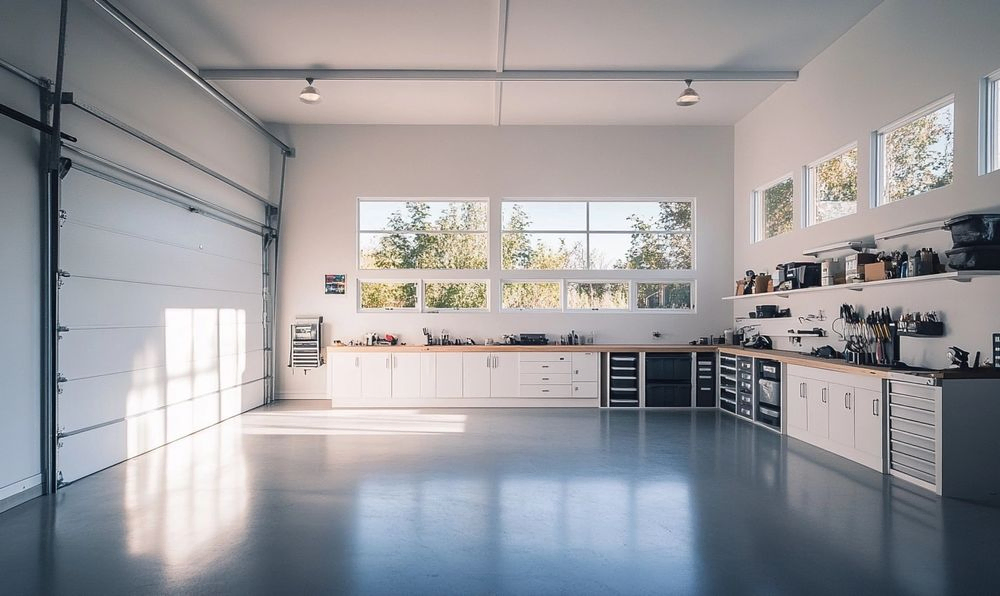
Key Considerations Before Installing a Ventilation System
And so, you’ve finally decided to take the leap and invest in workshop ventilation systems for your garage. But before you dive headfirst into the installation process, there are a few crucial considerations to keep in mind. Let’s explore these key points to ensure you make the most out of your ventilation system:
Workshop Size and Layout
Consider the square footage of your workshop space and how the layout may impact airflow and distribution of clean air. Larger workshops may require more robust ventilation systems to effectively circulate air.
Types of Ventilation Systems
Understand the different types of ventilation systems available, such as exhaust fans, air purifiers, or air filtration systems. Choose a system that aligns with the specific needs of your workshop and the pollutants present.
Local Regulations and Codes
Check with local authorities and building codes to ensure compliance with regulations regarding ventilation systems. Some areas may have specific requirements for garage workshops to maintain safety standards.
Installation Costs and Budget
Consider the initial installation costs of the ventilation system, including equipment, labor, and any modifications required. Create a budget that accommodates not only installation but also future maintenance and upkeep costs.
Maintenance and Upkeep
Plan for regular maintenance and upkeep of your ventilation system to ensure optimal performance. This may include filter replacements, inspections, and cleaning to prevent malfunctions and maintain air quality.
But remember, installing a ventilation system is not just about meeting regulatory standards. It’s about creating a safe and healthy environment for yourself and others who may use your workshop. By taking these key considerations into account, you can ensure that your ventilation system works effectively to keep the air in your workshop clean and your workspace safe.

Step-by-Step Guide to Installing a Workshop Ventilation System
So, you’ve decided to take the plunge and improve the air quality in your garage workshop with a proper ventilation system. Good for you! But where do you start? Let’s break it down into manageable steps.
Assess Your Workshop Needs
Before rushing into installation, consider the size of your workshop and the type of work being done. Understanding your specific requirements will help you choose the right ventilation system.
Choose the Right Ventilation System
Look into exhaust fans, air purifiers, or a combination of both for optimal airflow. Consider factors like noise levels, energy efficiency, and installation ease.
Plan the Installation
Determine the best location for your ventilation system. It should be near potential sources of fumes or dust but also not obstruct your workspace. Measure the area to ensure the system fits properly.
Install the Ventilation System
- Begin by assembling the necessary tools and equipment.
- Follow the manufacturer’s instructions carefully during installation.
- Ensure proper ventilation ductwork connections for effective airflow.
- Test the system to guarantee it’s functioning correctly.
Installation complete! Now you can breathe easy knowing your workshop is a safer place to work in.

Maintenance Tips for Workshop Ventilation Systems
Congratulations on installing your workshop ventilation system! Now that your garage is equipped with a proper ventilation setup, it’s crucial to keep it working efficiently. Regular maintenance is key to ensuring the system functions effectively and keeps you safe in your workspace. Here are some tips to help you maintain your workshop ventilation system:
Clean Filters Regularly
Filters are the first line of defense in your ventilation system. Cleaning or replacing them as needed will prevent dust and debris from clogging the system, allowing for optimal airflow.
Monitor Airflow
Regularly check the airflow in your workshop to ensure it’s consistent and adequate. Adjust the system as needed to maintain proper ventilation levels.
Inspect Ductwork
Check the ductwork for any signs of damage, leaks, or blockages. Seal any leaks and clear any obstructions to maintain the efficiency of your ventilation system.
Check Exhaust Fans
Exhaust fans are crucial for removing harmful fumes and gases from your workshop. Ensure they are functioning correctly and replace any faulty fans promptly.
Remember, a well-maintained ventilation system not only protects your health but also prolongs the life of your equipment. Neglecting maintenance can lead to poor air quality, increased health risks, and potential safety hazards in your workspace. By following these simple maintenance tips, you can enjoy a safe and healthy workshop environment for years to come.
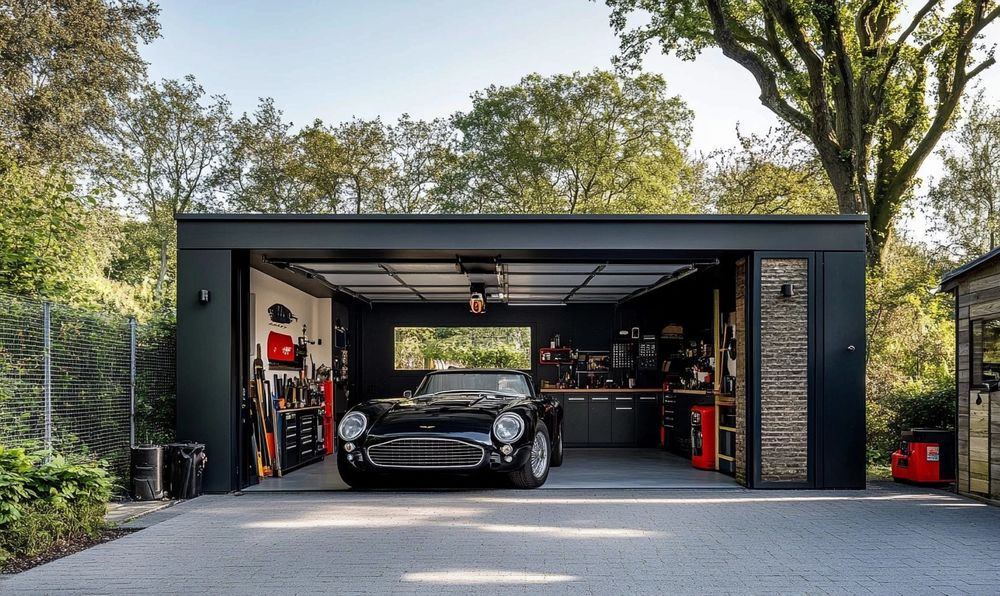
Signs That Indicate Your Ventilation System Needs Maintenance
Having a reliable workshop ventilation system is crucial for maintaining a safe and comfortable working environment. However, like any other equipment, these systems require regular maintenance to ensure optimal performance. Here are some signs to watch out for that indicate your ventilation system may need some attention:
Strange Odors:
If you notice unusual smells lingering in your garage workshop, it could be a sign that your ventilation system is not effectively removing fumes and contaminants from the air.
Poor Air Quality:
Do you or your colleagues experience frequent coughing, sneezing, or eye irritation while working in the workshop? This could be due to inadequate ventilation, leading to poor air circulation.
Loud Noises:
Unusual sounds coming from your ventilation system, such as rattling or whistling noises, indicate that some components may be worn out and in need of maintenance.
Reduced Airflow:
If you notice a decrease in the airflow coming from the ventilation system, it may be clogged filters or blocked ductwork that needs to be cleaned or replaced.
And what happens if you ignore these warning signs? Your workshop could become a breeding ground for harmful fumes, dust, and other airborne particles.
So, regular maintenance is key to ensuring your workshop ventilation system operates efficiently and keeps you safe while you work on your projects.
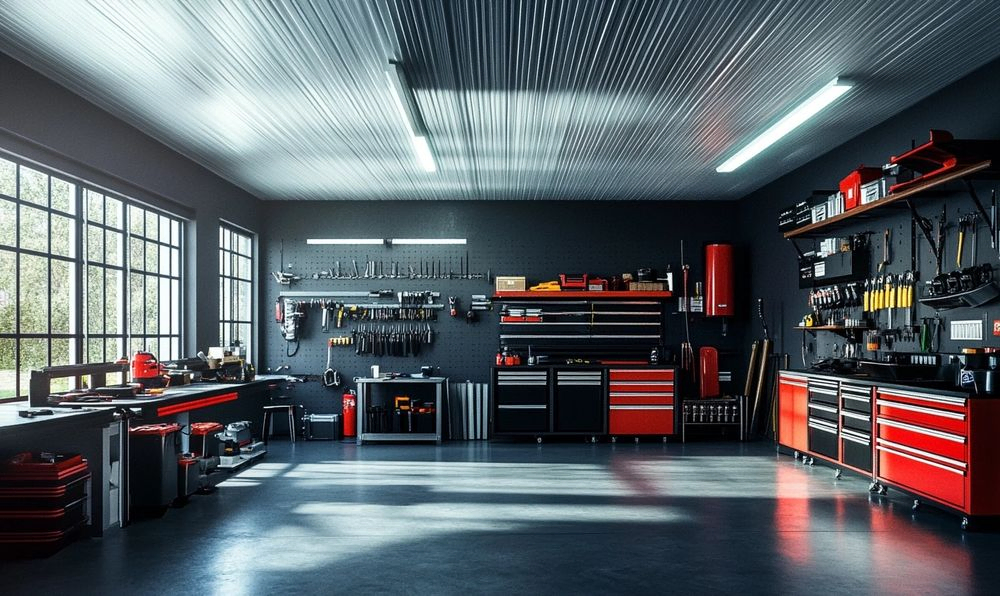
Enhancing Workshop Safety with Proper Ventilation
When it comes to your garage workshop, ensuring proper ventilation is crucial for maintaining a safe and healthy working environment. Poor air quality can lead to a range of health issues, from respiratory problems to headaches and fatigue. Here are some tips to enhance safety through adequate ventilation:
Invest in High-Quality Ventilation Systems
Installing a reliable ventilation system is key to removing harmful fumes and airborne particles from your workshop. Consider options like exhaust fans, air purifiers, and dust collectors to keep the air clean.
Position Ventilation Equipment Strategically
Place ventilation equipment near sources of pollutants, such as your workbench or machinery, to effectively capture and remove contaminants before they disperse throughout the space.
Regularly Maintain Your Ventilation System
Maintaining your ventilation system is vital for optimal performance. Clean or replace filters as needed, inspect ducts for blockages, and ensure that fans are functioning correctly to prevent any buildup of hazardous particles.
Consider Additional Safety Measures
Alongside ventilation, consider implementing other safety measures in your workshop, such as wearing protective gear like masks and goggles, using proper storage for chemicals, and keeping the workspace well-lit to prevent accidents.
By prioritizing proper ventilation in your garage workshop, you can create a safer and healthier environment for yourself and anyone else who may frequent the space.
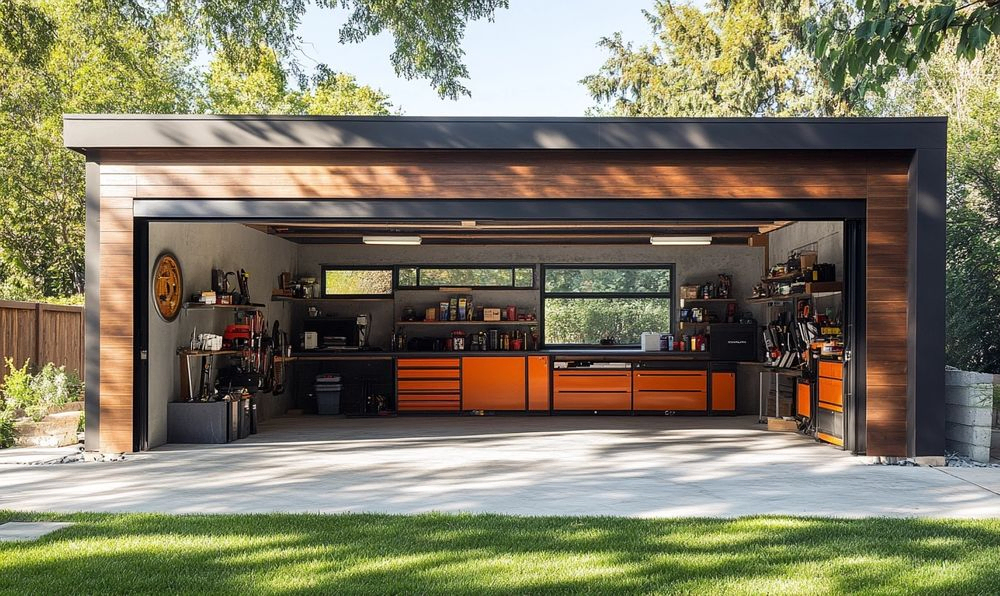
Common Mistakes to Avoid When Installing Workshop Ventilation
When it comes to installing workshop ventilation systems, there are several common mistakes that you should steer clear of to ensure optimal performance and safety in your garage workshop. Let’s delve into these pitfalls to help you avoid them.
Neglecting Proper Planning and Research
Skipping the crucial step of planning and researching can lead to installing a ventilation system that is either inadequate or unnecessary for your workshop size and layout.
Incorrect Placement of Ventilation Equipment
Placing exhaust fans or air filtration units in ineffective locations can hinder proper airflow circulation, resulting in poor ventilation performance.
Underestimating the Importance of Regular Maintenance
Ignoring routine maintenance tasks such as filter replacements and system inspections can compromise the efficiency and lifespan of your ventilation system over time.
Overlooking Safety Features and Regulations
Failure to adhere to safety standards and regulations when installing ventilation systems can pose serious risks to your health and the overall safety of your workshop environment.
And when it comes to maintaining workshop ventilation systems, it’s essential to stay vigilant and address any issues promptly to ensure a safe and productive workspace.
Conclusion
As we wrap up our guide on installing and maintaining workshop ventilation systems, it’s essential to emphasize the importance of prioritizing safety in your garage workshop. Proper ventilation not only improves air quality but also protects your health and wellbeing.
By investing in a high-quality ventilation system and regularly maintaining it, you can create a safe and productive working environment. Remember, good ventilation goes hand in hand with appropriate safety equipment, such as fire extinguishers, first aid kits, and protective gear.
Regular inspections, cleaning, and repairs will ensure that your ventilation system operates efficiently and effectively. Don’t overlook the significance of proper ventilation – it’s a crucial aspect of any well-equipped workshop.
Ultimately, your workshop ventilation system is a long-term investment in your health, safety, and overall productivity. So, take the time to install it correctly and maintain it diligently. Your future self will thank you for creating a safe and comfortable workspace.
Frequently Asked Questions (FAQs)
Question 1: Why is workshop ventilation important?
Proper ventilation is crucial in a workshop to remove harmful fumes, dust, and airborne particles that can pose health risks to individuals working in the space.
Question 2: What are the benefits of installing a workshop ventilation system?
Installing a ventilation system helps maintain air quality, reduces the risk of respiratory issues, ensures a comfortable working environment, and improves overall safety in the workshop.
Question 3: How often should workshop ventilation systems be maintained?
Workshop ventilation systems should be regularly inspected and maintained at least once a year to ensure optimal performance and efficiency.
Question 4: What safety equipment is essential for a garage workshop?
Essential safety equipment for a garage workshop includes safety goggles, ear protection, dust masks, fire extinguishers, and proper lighting.
Question 5: Can I install a workshop ventilation system myself?
While it is possible for some individuals to install basic ventilation systems, it is advisable to consult with professionals to ensure proper design, installation, and compliance with safety regulations.
Question 6: What are the common signs of inadequate workshop ventilation?
Common signs include a strong smell of fumes, excessive dust accumulation, high humidity levels, and a feeling of stuffiness or lack of fresh air in the workshop.